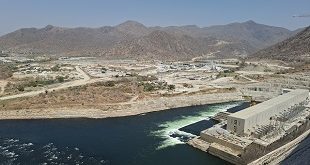
COMMENT | NANCY QIAN – PROJECT SYNDICATE | Nine months after Russia invaded their country, Ukrainians are seizing back their territory and giving their people hope of a military victory. But when it comes to long-term peace and prosperity, a military victory would be only the end of the first phase. The next phase – reconstruction – will be much longer and harder, and it will require continued, extensive economic support from the country’s friends and allies.
The Ukrainian economy is expected to have contracted by one-third in 2022. The war has kept people from their homes and normal jobs, some 13 million civilians have been displaced, and 700,000 Ukrainians (mostly young men) have left the labor force to serve in the armed forces. Factories and homes have been destroyed, and the Kyiv School of Economics estimates that Ukraine’s infrastructure losses total $115 billion.
Some of these problems will be resolved naturally whenever the war ends, but most will not be. Many of the displaced will not have homes or jobs, and the wholesale reconstruction of housing, schools, hospitals, and other infrastructure needed to begin economic recovery will bring massive costs. Ukrainian economists estimate that restoring the lost infrastructure will cost at least $200 billion – and the longer the war lasts, the larger the bill will be.
Given that these amounts are equivalent to Ukraine’s pre-war GDP, Ukrainians cannot be expected to pay for reconstruction on their own. Ukraine’s European neighbors will need to make a major financial commitment to help rebuild its economy. Fortunately, doing so will serve their own interests. Economic instability in the region is a breeding ground for political instability. An unstable Ukraine cannot be a strong ally.
American leaders recognized as much in the post-World War II era, when the Marshall Plan channeled around $130 billion (in 2010 dollars) to facilitate European reconstruction. As in Ukraine today, infrastructure across the continent (railways, electric utilities, port facilities, roads, bridges, and airports) had suffered severe damage from aerial bombardment, and disruptions to agricultural production and transportation meant that many people were at high risk of famine.
The Marshall Plan had two aims: European economic recovery and containment of the Soviet Union. Europe’s economic stabilization was seen as a prerequisite to building stable institutions that would promote income growth and entrench liberal democracy.
The plan was largely successful. In Italy, it stimulated growth and fostered industrial development through the rapid construction of infrastructure, creating the conditions for the robust economic expansion of the post-war decades. In Germany, it led to new industrial policies and reinvigorated growth. And across Western Europe, it played a crucial role in restoring financial stability, driving economic liberalization, and (moderately) alleviating resource shortages.
By the 1960s, all 17 countries that accepted aid – Austria, Belgium, Denmark, France, West Germany, Greece, Iceland, Ireland, Italy, Luxembourg, the Netherlands, Norway, Portugal, Sweden, Switzerland, Turkey, and the United Kingdom – had rebounded economically and become stable liberal democracies.
The Marshall Plan offers several important lessons for today. First, large cash injections for rebuilding infrastructure can deliver big payoffs. On average, Marshall Plan transfers from 1948 to 1952 represented less than 3% of GDP in the receiving countries. But, because the financial injections were frontloaded, they helped stimulate sustainable growth. For example, Italy received aid equivalent to 11.5% of its GDP in 1948.
Second, though a meaningful aid and reconstruction package for Ukraine will be expensive, it is entirely feasible. In 1948, US GDP was 3.5 times greater than that of France, Germany, and Italy combined. Today, the GDP of EU countries is more than 85 times larger than that of Ukraine.
Of course, there are important differences between Western Europe after WWII and Ukraine, Russia, and Belarus today. The Marshall Plan recipients were among the world’s most advanced economies at the time, whereas the former Soviet republics suffered from fundamental, systemic problems even before the war. In 13 of the 30 years from 1990 to 2020, Ukraine recorded negative GDP growth. These starting conditions suggest that economic stabilization will take much longer than it did in post-WWII Europe. But that is all the more reason to start planning now for a massive injection of aid.
Third, it sometimes pays to be generous toward former enemies as well as friends. The Marshall Plan allocated large sums to the countries that had fought against the US during the war. It was understood that ongoing stability in Allied countries would require stability in the broader neighborhood. France, which was partly ruled by the Vichy government, received the largest share (20.8%), followed by West Germany (10.9%), and Italy (10.6%). The implication for today is that under the appropriate political and strategic conditions, investing in the Russian and Belarusian economies could have long-run geopolitical benefit. This is still affordable in comparison to the Marshall Plan, because the European Union’s GDP is more than eight times larger than that of Ukraine, Russia, and Belarus combined.
Regardless of whether the West gives aid to Ukraine or also includes Russia and Belarus, the full costs of recovery will exceed the direct costs caused by the war. Altogether, the Marshall Plan represented 5% of America’s 1948 GDP. If EU countries were to commit 5% of their combined GDP to post-war reconstruction, they could fund an $870 billion aid package. American contributions can further increase the aid package.
Ultimately, Ukraine’s long-run success will depend on its allies’ commitment to its economic recovery. Without sustained economic support and thoughtful implementation, any peace that is achieved by a military victory will most likely be fleeting.
****
 Nancy Qian, Professor of Managerial Economics and Decision Sciences at Northwestern University’s Kellogg School of Management, is a co-director of Northwestern University’s Global Poverty Research Lab and the Founding Director of China Econ Lab.
Nancy Qian, Professor of Managerial Economics and Decision Sciences at Northwestern University’s Kellogg School of Management, is a co-director of Northwestern University’s Global Poverty Research Lab and the Founding Director of China Econ Lab.
Copyright: Project Syndicate, 2022.
www.project-syndicate.org
 The Independent Uganda: You get the Truth we Pay the Price
The Independent Uganda: You get the Truth we Pay the Price


